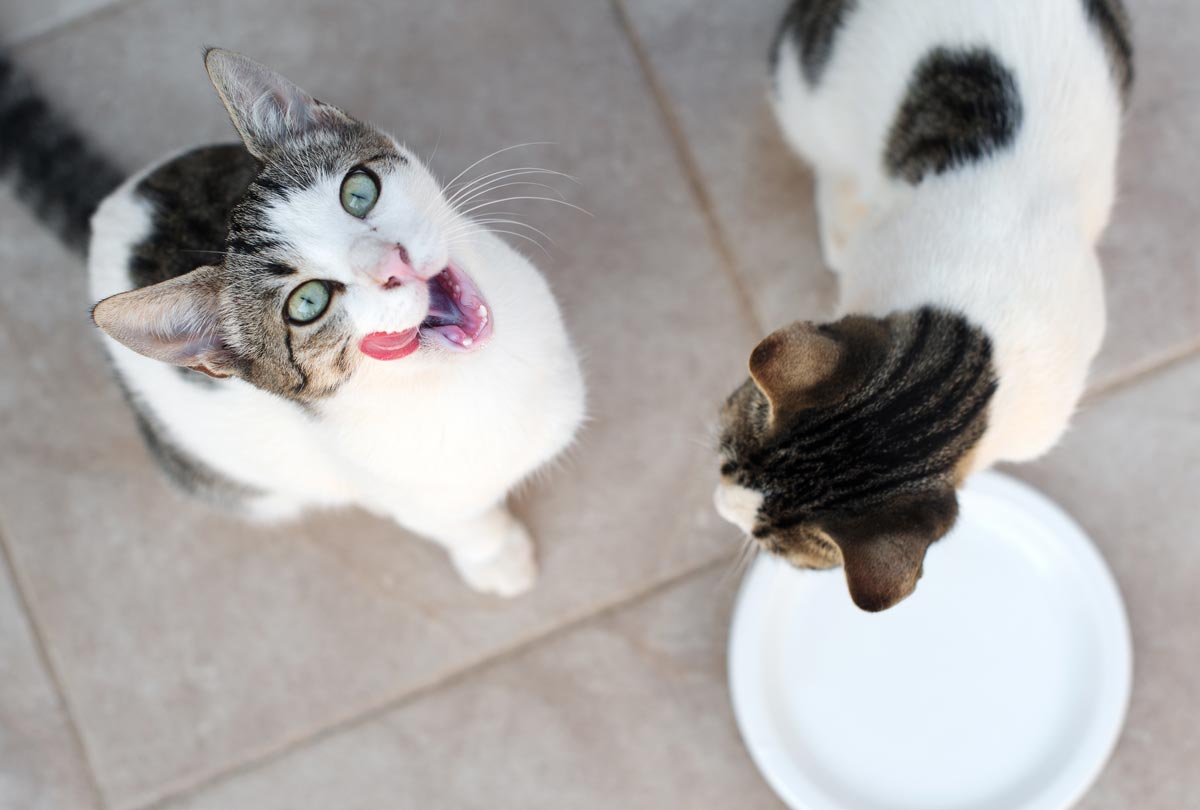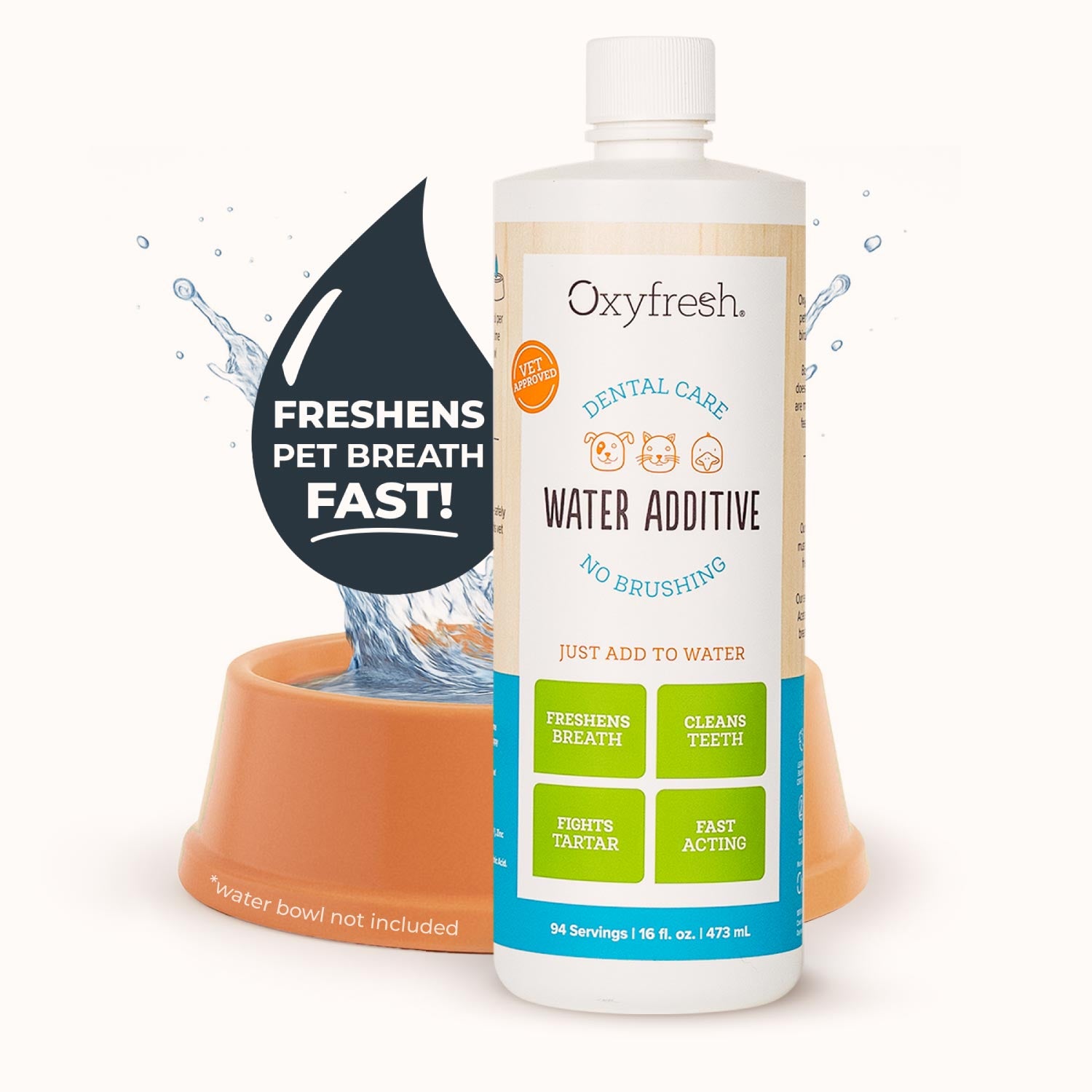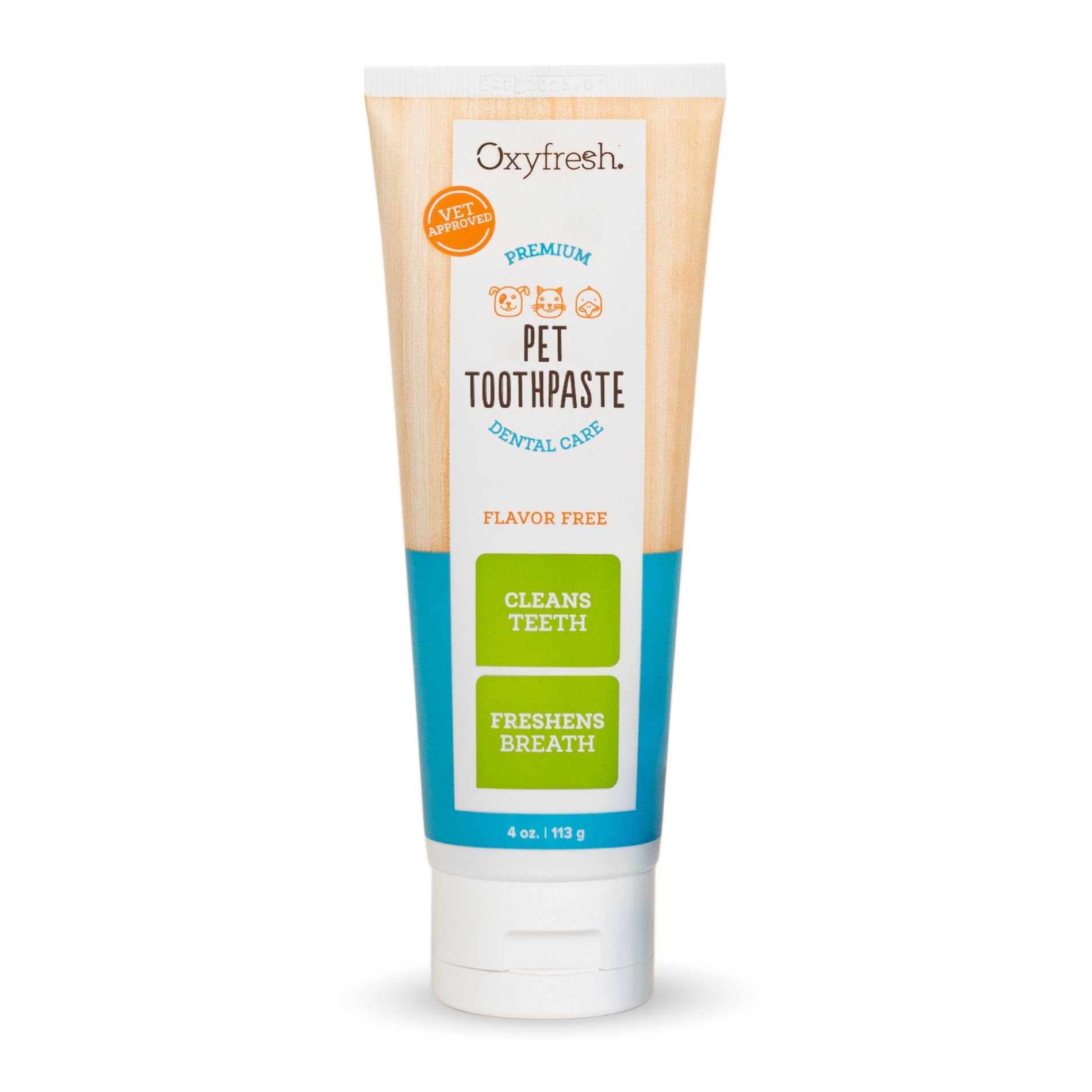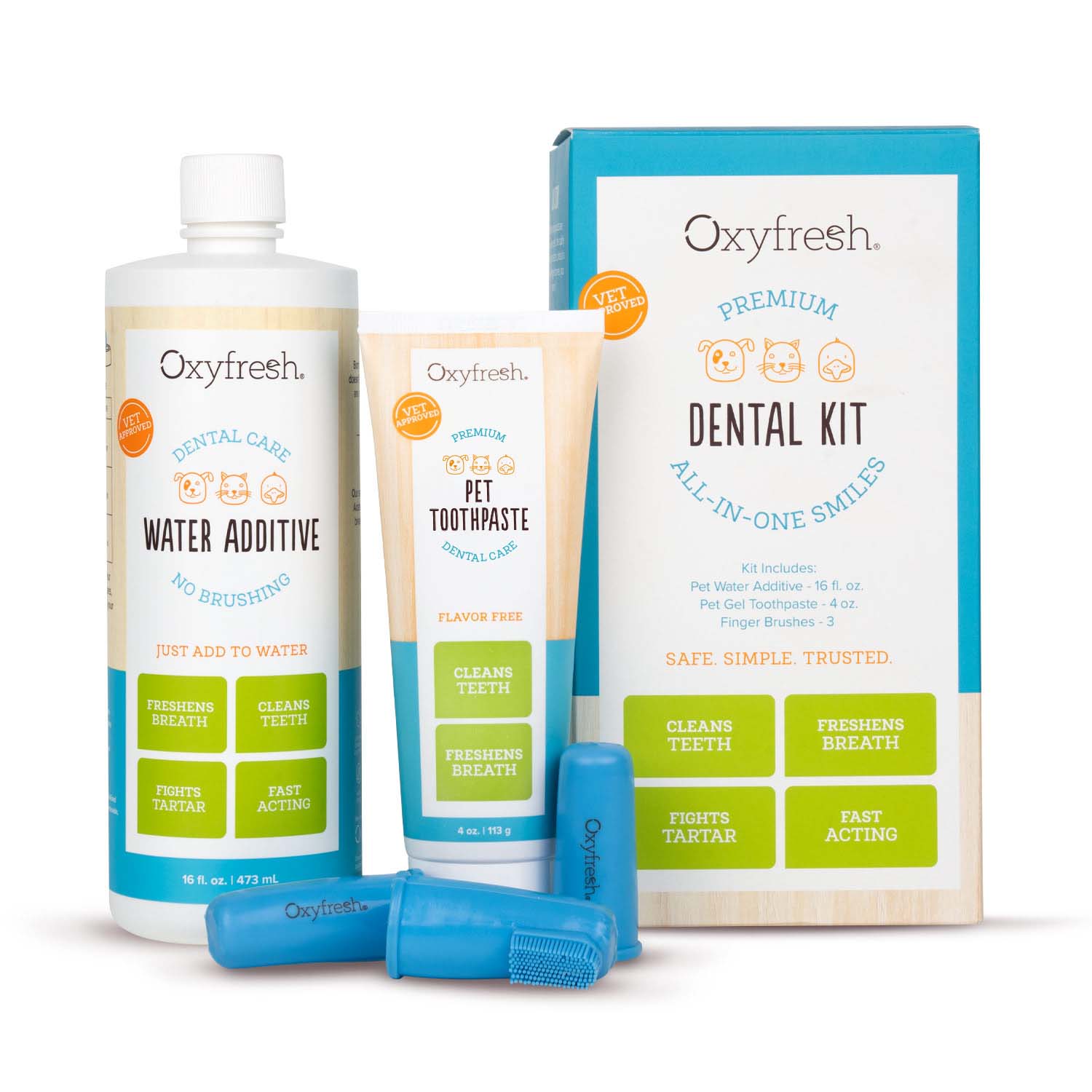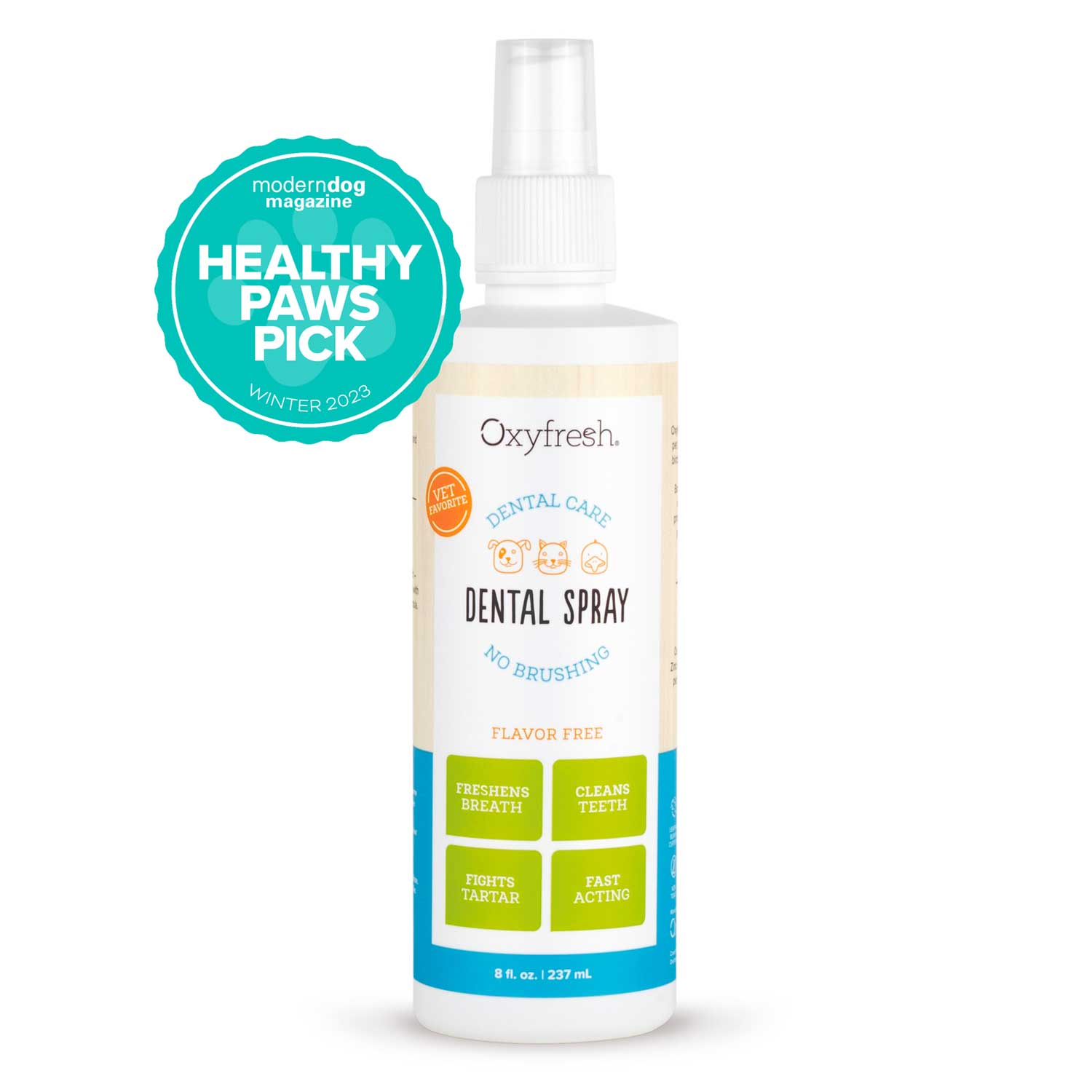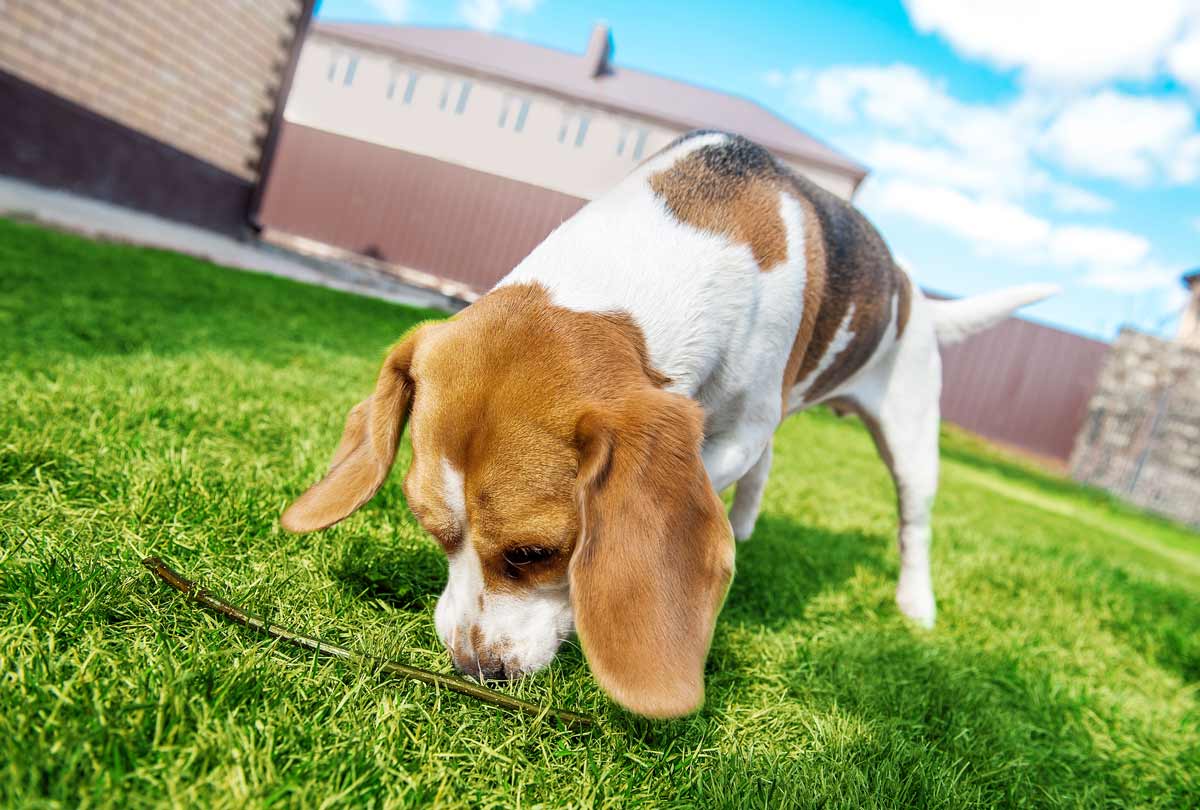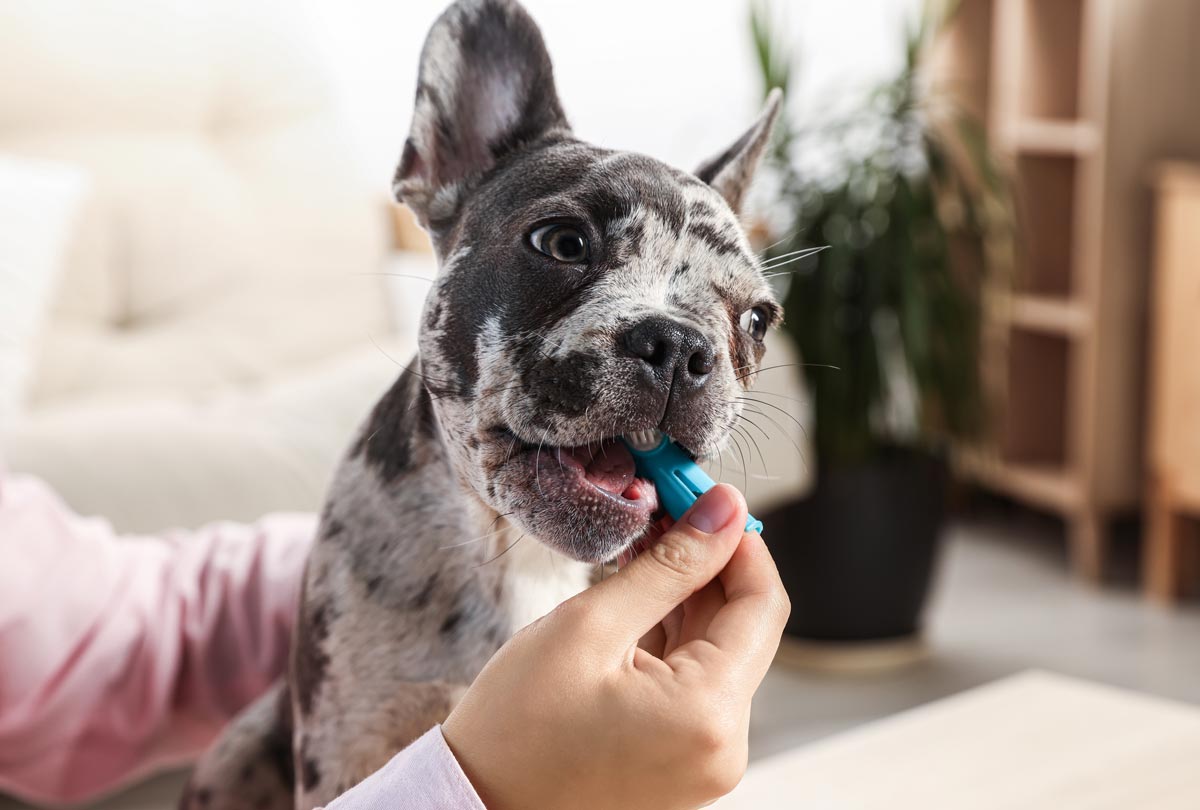Picture this: your cat happily purring as you calmly brush her teeth for two full minutes. Afterward, your cat nuzzles up to you, as if to say, "Thank you meowy much."
Phht, yeah right! In reality, cat toothbrushing usually looks more like WrestleMania, with the cat parent on the losing end. But don’t worry; there ARE cat teeth cleaning solutions that don’t require a toothbrush, so you can keep your sanity ... not to mention your dignity.
The Importance of Cat Teeth Cleaning
Our feline friends are just like us ... well, at least when it comes to dental care. (If you’re putting mice in your mouth and hissing at strangers, we need to talk.)
Regular dental care is essential so cats don’t develop periodontal disease (severe gum disease), which can take 1–3 years off their lifespans if left untreated.
Periodontal disease does not happen overnight. It occurs in four stages, with the earliest stage being gingivitis, marked by inflammation of the gums.
Don’t develop the mentality of "it won’t happen to MY cat!" The reality is 85% of cats over four years of age are impacted to some degree by periodontal disease. The good news is the early stages are 100% reversible.
What Causes Periodontal Disease in Cats?
When your cat eats, bacteria and food particles start to party, leading to sticky, clear plaque forming on the teeth. If the plaque isn’t removed, it will eventually mineralize into tartar (calculus), which is yellow-brown in color.
Tartar likes to gather around the edge of the gum line but can eventually cover the entire tooth surface in severe cases. Tartar is filled with irritating bacteria that can infect and inflame the gums (and spread throughout the body!), eventually eroding the bone and ligaments that support the teeth. This is very painful for cats, but unfortunately, their instinct is usually to hide their pain.
If your cat is in the later stages of periodontal disease, your first step needs to be an appointment with the vet. When there’s lots of tartar and bacteria, a professional deep-clean is essential.
A checkup will also rule out other health conditions that cause similar symptoms, such as feline tooth resorption, which affects up to 60% of cats and requires tooth extractions. In a purrfect world, you’ll also be regularly inspecting your cat’s teeth and gums at home for signs of a problem.
Signs of Dental Disease in Cats
- Bad breath (that fishy cat breath is NOT normal)
- Red, bleeding or swollen gums (healthy cat gums are light pink)
- Loose teeth
- Visible yellow-brown tartar on teeth
- Cat is drooling excessively
- Change in eating habits (chewing on one side of mouth, sitting helplessly in front of food, crying at mealtimes, refusal to eat)
Cat Gingivitis Treatment Cost
An ounce of prevention can be worth a pound of cash in your pocket. If you shirk your cat’s teeth cleaning, there’s a good chance you’ll need to get your kitty in for a professional dental cleaning, which involves putting the cat under anesthesia and using scaling tools to scrape off all that hardened tartar.
If your cat’s gum disease is severe enough, extractions (tooth pulling) may be necessary. Throw in some x-rays and at-home pain meds, and the costs can really creep up ... to the tune of hundreds of dollars. While cat gingivitis treatment costs will vary based on the severity of your cat’s dental disease, the vet you choose, and the city you live in, you can expect to pay anywhere from $200–$1500.
Let's get the "treat" question out of the way ...
Giving your cat a treat each day and never needing a professional cleaning? Unfortunately, this is just wishful thinking. (If only it were that easy!) The truth is certain dental diets, dental treats and toys CAN help support a cat’s smile by scraping away a bit of plaque and reducing harmful bacteria, but they need to be a complement to a primary cat teeth cleaning method.
During your cat’s annual exam, talk to your vet about whether your cat should be on a special dental diet and what they recommend for healthy cat gums and teeth.
P.S. Not sure where to start when shopping for cat teeth cleaning treats and toys? Cut back on your screen time and check out our list of the top cat dental care products for 2023.
5 Cat Teeth Cleaning Methods That DON'T Require a Toothbrush
#1. Use a Topical Gel
Note: if your cat doesn’t want you ANYWHERE near his mouth, skip to door #5. Otherwise, a topical gel is a fantastic way to ensure healthy cat gums without fussing with a toothbrush. Simply rub it along their gum line and let it get right to work at fighting plaque while freshening your feline’s breath. Note: flavor-free cat gel will be less dramatic and better for picky pets (they know who they are).
#2. Use a Cat Dental Spray
If you’re not the type who wants to brush, you may find that a spritz is the, well, you know. A Cat Dental Spray is an easy way to ensure your cat’s breath is fresh at a moment’s notice (Saturday Snuggle Marathon!) while fighting the bacteria that can lead to cat gingivitis.
#3. Use a Cat Teeth Cleaning Powder
Powder to the people! Using a dental powder for cats can revolutionize your cat teeth cleaning routine. Simply sprinkle it over your cat’s food to reduce plaque and keep it from sticking to your cat’s teeth. No fuss, no toothbrush.
#4. Use a Plaque Wipe
Plaque wipes will remove plaque before it has a chance to stick to your cat’s teefers and turn into tartar (which can start to happen within 48 hours!). Simply swipe a wipe across your cat’s upper and lower teeth from back to front twice daily or after meals.
#5. Use a Cat Dental Water Additive
If you’re wanting the most paws-off approach to your cat’s dental care, a water additive is going to be the best choice for you. But word to all the cat mamas (and papas): you need to get a flavor-free water additive, or your cat may stop drinking their water. (No self-respecting cat wants their water to taste like mint, greet tea, or liver – blech!)
The choice that veterinarians recommend is Oxyfresh Pet Dental Water Additive. Oxyfresh is the only cat dental water additive on the market to contain Oxygene® – a safe, trusted, non-toxic ingredient that targets the bacteria that cause bad cat breath and plaque right at the source. No flavor coverups or masking ingredients, just real results. Best of all, your cat won’t even know it’s in their water bowl or fountain. (Score 1 for you, 0 for the cat.)
Now that you know some easy alternatives to brushing your cat’s teeth, it’s time to make a plan and stick to it! Don’t let the stone-cold stare fool you: your cat WILL be thankful for a cat teeth cleaning routine.

